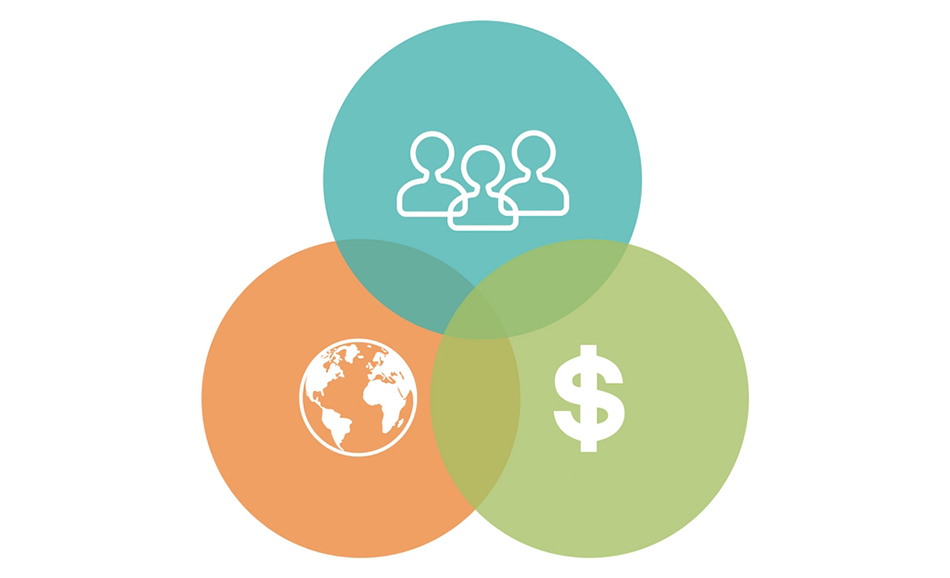Driving Sustainable Change: How Companies Are Embracing the Triple Bottom Line Approach
In an age where corporate social responsibility (CSR) and environmental sustainability have become integral components of a company’s identity, businesses are increasingly adopting the Triple Bottom Line (TBL) approach. This approach, which measures a company’s success based on its social, environmental, and economic impact, is redefining how organisations operate in today’s world. As companies aim to achieve a balance between profits, people, and the planet, they often find themselves in need of support to navigate the complexities of sustainable business practices.
 The Triple Bottom Line Approach
The Triple Bottom Line Approach
The Triple Bottom Line (TBL) approach was coined by John Elkington in the 1990s as a way to measure business success by evaluating not only financial gains (the economic bottom line) but also social and environmental performance. Here’s a closer look at the three pillars of the TBL approach:
- Economic Bottom Line: This is the traditional measure of a company’s financial performance. It focuses on profitability, revenue growth, and cost management.
- Social Bottom Line: The social aspect considers the company’s impact on people, both within the organization and in the broader community. It involves employee well-being, diversity and inclusion, and community engagement.
- Environmental Bottom Line: This pillar evaluates the company’s environmental impact, including resource consumption, emissions, and efforts to reduce its ecological footprint.
The Growing Embrace of Sustainability Strategies
In recent years, the call for businesses to be more responsible and sustainable has grown louder. Companies are realizing that they have a role to play in addressing critical global issues such as climate change, social inequality, and environmental degradation. To achieve these goals, they are increasingly integrating sustainability strategies into their operations.
Companies adopting sustainability strategies often face several challenges, including:
- Lack of Expertise: Many businesses lack in-house expertise to design and implement sustainability strategies effectively.
- Cost & ROI: Measuring the tangible Impacts and demonstrating the return on investment for sustainability initiatives can be difficult, especially in the short term.
- Regulatory Compliance: Keeping up with evolving sustainability regulations and ensuring the organization complies with them.
- Stakeholder Engagement: Engaging various stakeholders, both internal and external, to align with sustainability goals can be difficult.
- Change Management: often requires a cultural shift within the organization, which can be met with resistance.
- Data Collection and Reporting: Gathering, analyzing, and reporting on sustainability data can be a complex and time-consuming process.
- Alignment with Business Goals: Ensuring that sustainability strategies align with a company’s overall mission and objectives can be challenging.
- Resource Constraints: Smaller businesses may struggle with resource constraints when trying to implement comprehensive sustainability programs.
Outside help to bridge the gap

This is where companies often request help from sustainability focused experts & organizations.
- Expert Guidance: connecting companies with sustainability experts who can offer tailored advice, strategies and provide insights into compliance requirements and guidance on adhering to them.
- Stakeholder Engagement: developing workshops and other strategies for building engagement among the employees, communities, investors, and customers.
- Culture and Change Management: training programs to foster a culture of sustainability.
- Performance Metrics: Experts can help identify the right KPIs and develop measurement systems.
- Innovation Support: Facilitating innovation workshops to guide organizations in creating sustainable product and service innovations.
- Data Management: A platform that provides tools to collect, manage, and analyze sustainability data, streamlining the reporting process.
- Strategy Alignment: assist in aligning sustainability strategies with a company’s mission, ensuring that they become an integral part of the business model.
- Resource Optimization: help optimize resources, making sustainability more accessible, even for smaller businesses.
- Knowledge Sharing: Through a community of like-minded businesses and experts, enable knowledge sharing and best practices, fostering a culture of continuous improvement.
Conclusion
The Triple Bottom Line approach is redefining how companies measure success, emphasizing the importance of people, planet, and profits. As businesses recognize the significance of sustainability, platforms like Impactivs play a crucial role in helping them navigate the complex journey toward becoming more responsible and socially conscious organizations. With expert guidance, streamlined data management, and a focus on alignment with business goals, companies can make a meaningful impact on the world while also securing their long-term success. Embrace the Triple Bottom Line approach and be a part of the sustainable future of business.
